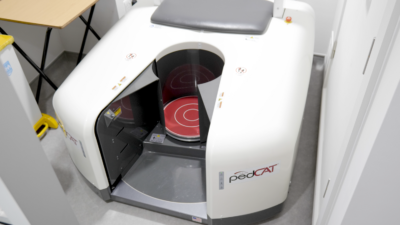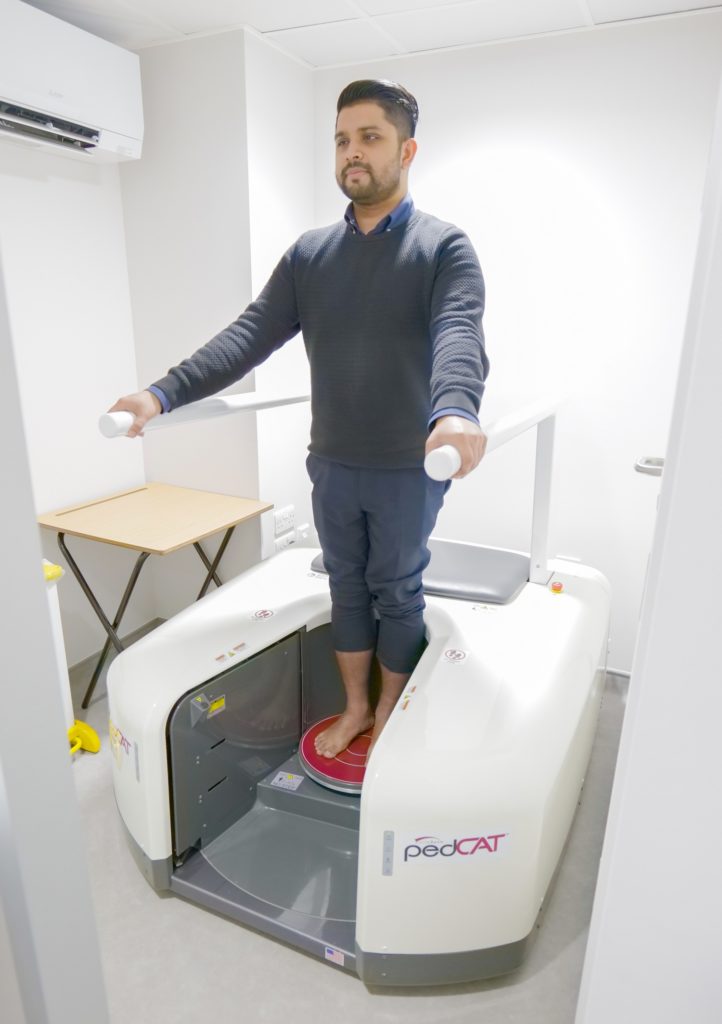A Standing CT is very similar to a normal CT scan, in that it uses X-ray scanners which rotate very quickly around part of the body, producing axial slices or ‘volumes’ of data from the area of the body being scanned. The main difference between a Standing CT and a normal CT scan is that whereas with a normal CT scan, the patient would be lying down in the scanner, in a Standing CT the patient is upright, either sat down or stood up, enabling images to be taken of the feet and ankles in a weight-bearing position.
In addition, similarly to a normal CT but in contrast to a regular X-ray, slices taken of the feet and ankles can be combined to produce 3D images, aiding the radiologists in identifying potential problems and assisting in their diagnoses.

